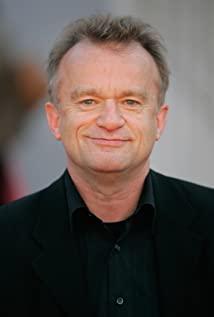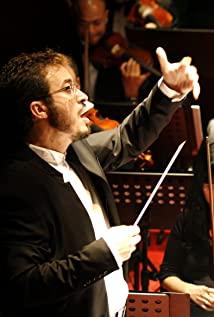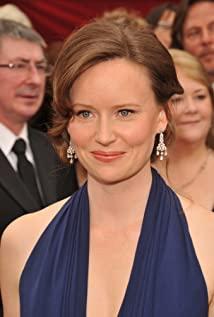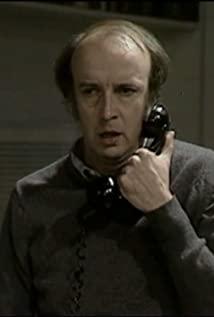story background is set in 1993, but in Oxford, a place with hundreds of years of academic and historical precipitation, the influence of the age seems to be Not obvious. But in this era, it is obvious that the genetic identification technology is not mature, and the public places are not as good as the current video surveillance. So at this time, it is still necessary to rely on pure logical reasoning rather than modern high-tech criminal investigation technology to detect murders. The case in the story unfolds step by step, and it is very reasonable.
In fact, this movie is not "very difficult" or "high IQ movie" as some critics say. The answer to the mystery is revealed by the two male protagonists at the end, which is very easy to understand. But it was extra interesting and slightly confusing to some viewers due to the mention of some mathematical and logical theories, vocabulary and characters in the story. Let's talk about the people and things mentioned in the movie, and the stories behind them, as a supplement for everyone's viewing information.
1.
At the very beginning of the Wittgenstein film, Ludwig Wittgenstein , whom Seldom mentioned in class, completed the so-called "On the Philosophy of Logic" on the battlefield of World War I, which marked the "philosophical turn of philosophy". Wittgenstein, born in Austria at the end of the nineteenth century, later became a British citizen. Wittgenstein had poor grades in high school and was a classmate with Adolf Hitler. In 1908 Wittgenstein came to Manchester to study aerodynamics, and thus needed to study mathematical principles. In 1911, through Frege's recommendation, he finally went to Trinity College, Cambridge University to become a student of the British philosopher Russell. After the start of World War I, Wittgenstein could have been exempted from military service because of his large number of brothers in his family, but he still took the initiative to apply for enlistment and completed the masterpiece "On the Philosophy of Logic" on the battlefield.
2. The Enigma machine
followed Martin into the rented house in Oxford. The landlady, Eagleton, first stopped the typewriter-like machine he was touching, which was the famous Enigma machine.
Enigma means "mysterious thing" in Greek, and was used by Germans in the 1820s to name this highly secure cryptographic machine. The Enigma cipher machine is famous because it was the cipher machine most relied on by the German army during World War II. In fact, the Poles cracked Enigma in 1932. After being annexed by Germany in 1939, the Polish government informed Britain and France of the decryption method. The most legendary story should be that in 1941, the German U-110 submarine was chased by the British destroyer "Big Dog". The British did not directly sink the U-110, but forced the Germans to abandon the ship, thus successfully obtaining the military Enig cipher machine and supporting radio transmitter. The Germans never knew that the Enigma code had been compromised after the U-110 sank. Until the end of the war, the German Navy's communications about submarines, down to the exact location, combat situation and commander's name of each submarine, were all captured by the German Navy. British Naval Intelligence got hold of it and made use of it.
The movie "U-571" released in 2000 was adapted from this incident, but the Americans were shameless and posted the deeds of the British cattle on Uncle Sam's face. From the description of the landlord, Mrs. Eagleton, it is clear that her deceased husband participated in the deciphering of the Enigma cipher machine during the war.
3. Turing
Next to the Enigma machine, there is a photo of the Eagletons (the couple should be the author's fictional characters) and Alan Turing. Turing was the most famous mathematician and logician in the UK in the mid-twentieth century, and is regarded as the father of computer science. The Computer Centre at King's College, Cambridge, is still named after Turing. However, God was jealous of talents, and Turing only lived to be 42 years old. Turing was also involved in deciphering the Enigma machine. In short, Turing was one of the first scholars to pay attention to artificial intelligence, and published the paper "Can machines think? "Proposed the famous Turing experiment to verify whether a machine has autonomous intelligence, laying the foundation for the logical working method of modern computers. And devoted his life to proving whether computers can solve all unimaginable mathematical problems. Turing died in 1954 after eating an apple tainted with cyanide. Some said it was suicide, but the family insisted that it was eating by mistake. So Mrs. Eagleton said in the movie: "Poor man, died very bizarrely. Died from a poisoned apple, just like Snow White." Gossip, because Turing's contribution to the computer field, some people have always said that Apple's logo, It was the poisoned apple bitten by Turing. However, both Apple and its designers have denied this claim.
4. Pi, the Golden Ratio, and the Fibonacci Sequence; the Butterfly Effect and Mutations
Martin was humiliated the first time he heard Seldom speak. Seldom justifies the idea that "philosophy is dead", quoting Wittgenstein: "Where the unspeakable, we must remain silent". In fact, it is a chaotic and vague argument that scholars are in awe of the profound philosophy of the universe and that everything cannot be completely objectively described. Martin said: "I believe in pi, the golden ratio and the Fibonacci sequence."
The three nouns are numbers, ratios, and sequences. However, π is an infinite and non-recurrent number, that is, an irrational number; the golden ratio is not 0.618, which is also irrational; the Fibonacci sequence refers to the sequence in which the latter term is only the sum of the former two, which is also endless, and some people imagine It contains an infinite number of prime numbers. It’s no coincidence that π is created because of the need to describe a circle; the golden ratio exists in everything in the world, such as the proportion of a person’s navel in the whole body; 99% of sunflower seeds are spirally arranged in the order of the Fibonacci sequence . In this way, although these three mathematical concepts are inherently disorderly and irrational, they can more accurately describe our world and natural things. So Martin challenged the authority of the old pedant Seldom with the confidence of a newborn calf, believing that everything in the world can be accurately described by mathematics, the so-called "absolute truth".
Seldom hit back, citing examples of the butterfly effect and genetic mutation. The butterfly effect is already well known because of the film of the same name a few years ago. The concept, named after a 1979 speech "Will a Butterfly Flutter Its Wings in Brazil Cause a Tornado in Texas?" refers to a dynamic system in which a small change in initial conditions can drive a long-term huge chain of events. reaction. This is a chaotic phenomenon. Seldom pointed out that although this chaos theory has been proposed for many years, it has not been of substantial help in predicting hurricanes.
Another example of Seldom is the canceration of cells. In 1993, genetic technology was not as developed as it is now, and there was no strong theoretical basis for DNA damage to cause mutations in normal cells, so it was regarded as an indescribable example of science at that time.
The first time Martin faced off against Seldom, he was ridiculed in public, and he felt disgraced and wanted to leave. Returning to the house to pack, he ran into Seldom and found out that Mrs. Eagleton had been murdered at home.
5. Heisenberg
Martin and Seldom have a close connection with the murder case, and together they discuss the deadly "sequence" left by the murderer. The two began arguing again after the restaurant mock crime scene, with Martin insisting that what he saw was real. Before he finished speaking, he was tripped by the turning head of the construction site under his feet. Seldom mocked that he didn't see everything, and Martin picked up the one around him and turned his head to say that these things were real and reliable. Seldom mocked, "Are you sure? Heisenberg is not as sure as you are." Here Seldom quotes the German physicist, one of the founders of quantum mechanics, and the representative of the "Copenhagen School" Werner Heisenberg The main theory, the "Heisenberg Uncertainty Principle" or known as the Uncertainty Principle. To put it simply, for example, the electron cloud is not a real cloud, but the projection of the trajectory of the electron within a certain range, and at each moment, the position and shape of the electron are different, and there is no rule to follow. I won't repeat it here, Seldom just used this reasoning to persuade Martin not to absolutely trust his own judgment and reduce the suspicion of the murderer.
6. Gay Suspicious
This film is essentially a suspense film, but there is no doubt that the screenwriter mentioned British mathematicians and logicians and their fields in the play and used this as the background of the story. In the story, Martin's nurse girlfriend vaguely insinuates that Martin's attitude towards Seldom is more than just admiration for Seldom, and on the whole, such a plot is not helpful to the plot. I think maybe the writer is trying to insinuate something in reality. The aforementioned Wittgenstein, three of the five brothers were gay. Two of the older brothers committed suicide because of family pressure. Wittgenstein did not want the tragedy to repeat itself. But it is said that Wittgenstein actively enlisted in the war in the past, just wanting to "die with dignity".
And Turing is a tragedy among homosexuals. The persecution of his homosexuality has ruined his career. In 1952, his partner and others broke into his home and burglarized, but Turing was charged with "clearly indecent and sexually reversible behavior" after the investigation after calling the police. Turing was ordered to choose between jail or hormone therapy, and he chose to inject hormones. The injections, which lasted for a year, caused great harm to Turing physically and mentally, and caused side effects such as breast development. Turing eventually died from eating a poisoned apple, and many people suspected that he was overwhelmed by the burden of life and spirituality and committed suicide. This is obviously a tragedy caused by the times. Fortunately, the society is enlightened and open, and the tragedy will not be staged again. The British government has also apologized to Turing's family in recent years.
Reminiscent of the film "Einstein and Eddington", which is also a scientist, also spent a lot of film on Eddington's gay identity and life.
7. Plot analysis (big spoilers!!!!
Those who haven't watched the movie, please be careful!!!!) It is worth noting that this paragraph is not written, in fact, Martin and Seldom have explained it very clearly in the church at the end. However, a lot of academic vocabulary in this film confuses people's eyes and ears, confuses people's eyes and ears, and makes many people look confused, so it's okay to write.
American student Martin studied mathematical logic, and Professor Seldom, an academic authority, came to Oxford to study. Seldom is eccentric, and Martin deliberately rents the apartment of Seldom's old friend's widow in order to be close to him.
Through the mouths of Mrs. Eagleton and her daughter Beth, it can be learned that Mrs. Eagleton has a soft spot for Seldom, and when the two couples were traveling together, they had a tragic car accident. Mr. Eagleton and Seldom's wife unfortunately died, and it was Seldom who was driving.
Beth has endured her mother's eccentric temper for years, and it's clear that her emotional path has been rocky as a result. Beth falls in love with Martin at first sight, and Martin meets his nurse girlfriend on the court. Beth is very envious of Martin's way of life as a young man who can come and go freely. He suffers from being burdened by his disabled mother and unable to escape from reality. Always try anyway, Martin told Beth during a conversation outside the apartment. The speaker has no intention of the listener, and Beth really kills his mother. Afterwards, he asked his father's friend Seldom for help (the so-called first note).
Seldom ran into Martin when he went to Beth's house, but had no choice but to witness the murder scene together. Seldom felt guilty for the Eagleton family because of the car accident when he was young. He couldn't bear his friend's only daughter to go to jail, so he made up a serial killer's lie to exonerate Beth. Seeing the word "Kreis" on the scrabble board at the time of Mrs. Eagleton's death, he made up the lie that the first note was a ring in its German meaning, leading the police to believe it was a serial murder, and The murderer will continue to commit crimes.
Seldom has some knowledge of the hospital's dying patients because of frequent visits to the hospital to see disabled students. When one of the patients died, a second note was designed "by chance" for Martin to see, while Seldom stabbed pinholes in the corpse of natural death to mislead everyone that it was murder. Because Seldom didn't kill himself, nor did he plan to kill, he didn't know when the next natural death would happen. When Martin asked him for the third symbol of the fatal sequence, he gave Martin a blank answer. He bet that Martin wouldn't open to see it because of his self-esteem.
The third death was the band's trio player, who can be seen coughing frequently in the previous Beth practice scene. Emphysema caused his sudden death at the recital, and Seldom took advantage of the natural death again and gave a third symbolic triangle. The last tragedy was indeed a tragedy. The terminally ill girl's father is a school bus driver for disabled children, and her daughter desperately needs an organ transplant but can't find a donor. After the first three so-called serial murders were reported, the driver's father was determined to imitate "serial killers" and cause car accidents, killing the mentally handicapped child and giving his daughter a chance to get a transplantable organ.
Martin blamed Seldom's deliberate misdirection and arrogance for the last major "unnatural" casualty, and Seldom again cited the butterfly effect to tell Martin that it was Martin's words that made Beth decide to kill his mother. Martin is the butterfly with the wings.
Conclusion: The murderer of Mrs. Eagleton was her daughter Beth; both the hospital patient and the triangle musician died of natural causes; the final car accident was the deliberate murder of the driver's father in order to donate organs to his daughter, but he failed to jump out of the car in time. Martin was used by Seldom, and although neither of them killed themselves, they both had an impact on the murder and the murderer.
View more about The Oxford Murders reviews











